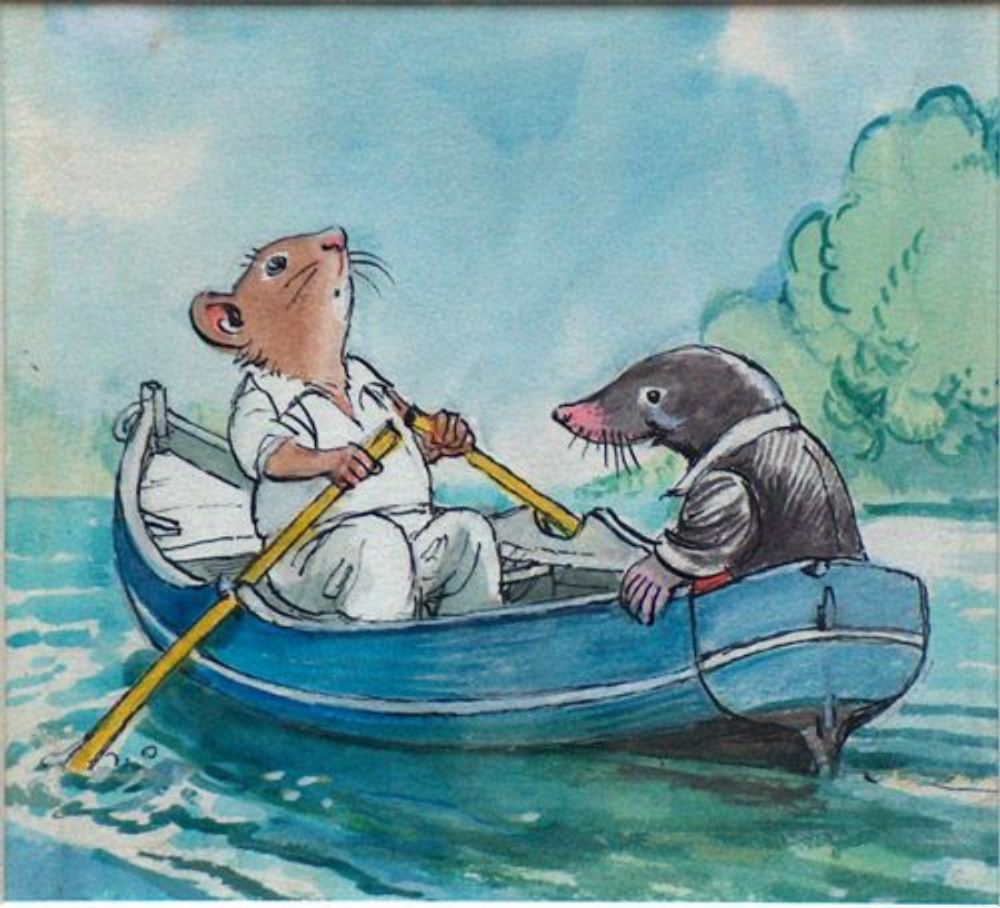


Book of connected creature stories by English essayist Kenneth Grahame that started as a progression of sleep time stories for his child and was distributed in 1908. The wonderfully composed work, with its reminiscent depictions of the field blended with invigorating experiences, turned into an exemplary of English kids' writing.
The stories relate the experiences of a few creature companions and neighbors in the English open country — basically Mole, Rodent, Frog, and Badger. Albeit the creatures talk, philosophize, and act like people, every animal additionally holds its particular creature propensities. The story starts when Mole chooses to go to the riverbank one morning instead of do his spring cleaning. There he goes over his companion Rodent, a water rodent, and they spend the spring and summer together. One day they visit the enthusiastic, liberal, and pretentious Mr. Frog, proprietor of Amphibian Lobby, who has a lot of cash however not much mind. Frog is given to trends, and Mole and Rodent go along with him in a journey in his current energy, a pony drawn parade (a truck with beds and cooking gear), until a quickly moving auto scares the pony and wrecks the procession. Amphibian is entranced by the vehicle. Mole and Rodent later go to the Wild Wood to visit the generous and capable Badger, to whom they report that Frog has purchased and crushed a few cars.
The three companions endeavor a mediation, to keep Frog from purchasing and destroying more motorcars. Regardless of their endeavors to contain him, Frog getaways, and, when he experiences an unattended vehicle, he takes it. Unavoidably, he is gotten and shipped off jail. Notwithstanding, the guard's little girl has compassion for him and assists him with getting away. After many further experiences, Amphibian is finally protected by Rodent. He discovers that in his nonappearance, Frog Corridor has been taken over by weasels and stoats, yet Badger realizes that Amphibian Lobby has a mystery burrow entrance, and the gatecrashers are removed in a climactic fight, trailed by a celebratory dinner.
Between Frog's undertakings, the other three primary characters experience calmer occasions, remarkably in the expressive sections "The Flute player at the Doors of First light," wherein the god Dish shows up, anonymous, to assist Mole and Rodent with tracking down Otter's lost youngster, and "Voyagers All," in which Rodent is almost entranced by the stories told by an ocean rodent.
•Not long after resigning as secretary of the Bank of Britain, Grahame distributed The Breeze in the Willows. Albeit at first met with blended audits, the book immediately became well known. Its fans included U.S. Pres. Theodore Roosevelt and English essayist A.A. Milne, the last option of whom removed Frog's undertakings for the play Amphibian of Frog Corridor (1929), the first and generally famous of various stage variations. A few film forms were likewise made.




